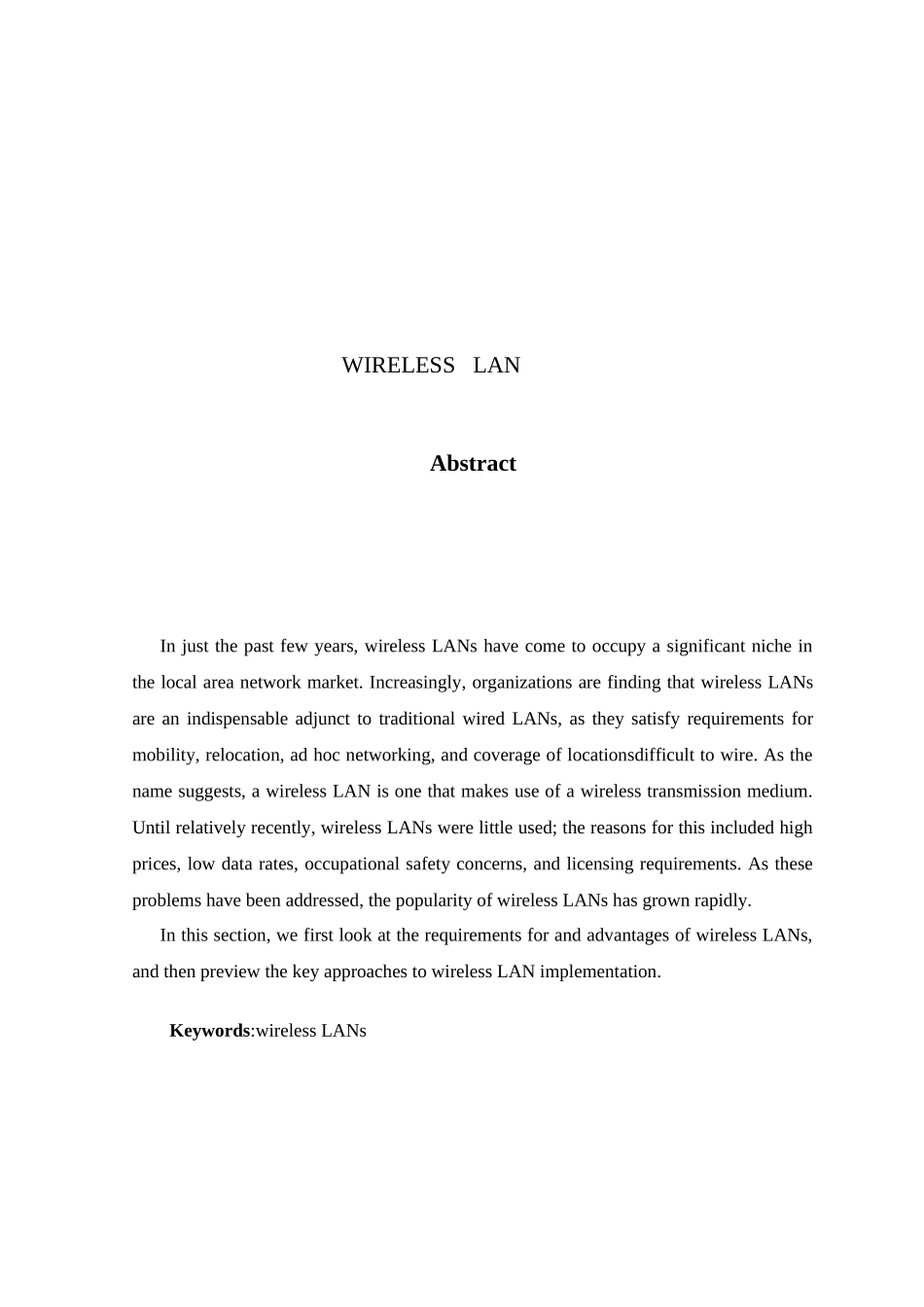摘要随着手机、平板电脑、可穿戴设备等新型移动设备的流行,物联网的性能飞速增长和基于位置感知的应用的激增,位置感知发挥了越来越重要的作用。在室内和室外的环境下,连续地为可靠地提供位置信息可以为用户带来更好地用户体验。目前大部分定位技术都是采用 GPS 技术来实现定位的,在室外能够起到 比较好的效果但如果在室内要实现定位就会出现很大的偏差,这是因为 GPS 信号经过墙体后衰减非常厉害,甚至无法进入室内,所以很难用 GPS 技术来实现 WiFi 室内定位技术是众多室内定位技术中的一种通过 WiFi 定位技术能够弥补 GPS 在室内环境下定位不准或无法定位的缺点。同时还能能够提供更为精确的室内定位服务。虽然主流的定位技术还有RFID、Zigbee、蓝牙、红外线等技术,不 过这些新兴定位技术仍有各自的限制,其主要原因是需要部署专属的定位网络系 统,且需耗费更大的建设成本。相比较之下,通过 WiFi 来实现室内定位具有较大优势关键字:单片机,WIFI,室内,定位WIRELESS LANAbstractIn just the past few years, wireless LANs have come to occupy a significant niche in the local area network market. Increasingly, organizations are finding that wireless LANs are an indispensable adjunct to traditional wired LANs, as they satisfy requirements for mobility, relocation, ad hoc networking, and coverage of locationsdifficult to wire. As the name suggests, a wireless LAN is one that makes use of a wireless transmission medium. Until relatively recently, wireless LANs were little used; the reasons for this included high prices, low data rates, occupational safety concerns, and licensing requirements. As these problems have been addressed, the popularity of wireless LANs has grown rapidly.In this section, we first look at the requirements for and advantages of wireless LANs, and then preview the key approaches to wireless LAN implementation.Keywords:wireless LANs目 录摘要.................................................................................................................................


